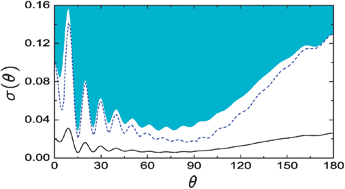Quantum mechanical limits to the control of atom–diatom chemical reactions through the polarisation of the reactants
Abstract
This article considers the extent to which one can control the reactivity of atom–diatom systems through reactant polarisation. Three different limits for reactivity manipulation are defined: “absolute” limits that do not depend on the reaction dynamics but can only be obtained for particular combinations of quantum numbers, “unconstrained” limits that depend on dynamics but not on constraints imposed by any particular experimental setup, and “constrained” limits that depend on dynamics and also on the constraints imposed by a particular experimental setup. Methods for calculation of these limits are presented and applied to the benchmark F + H2 reaction. The variations of the maximum and minimum reactivity one can obtain are analysed in terms of reaction mechanisms and steric constraints. Tables listing the minimum and maximum values of angular momentum polarisation moments of rank up to 4, and integer and half-integer quantum numbers up to 5, are also presented.


 Please wait while we load your content...
Please wait while we load your content...